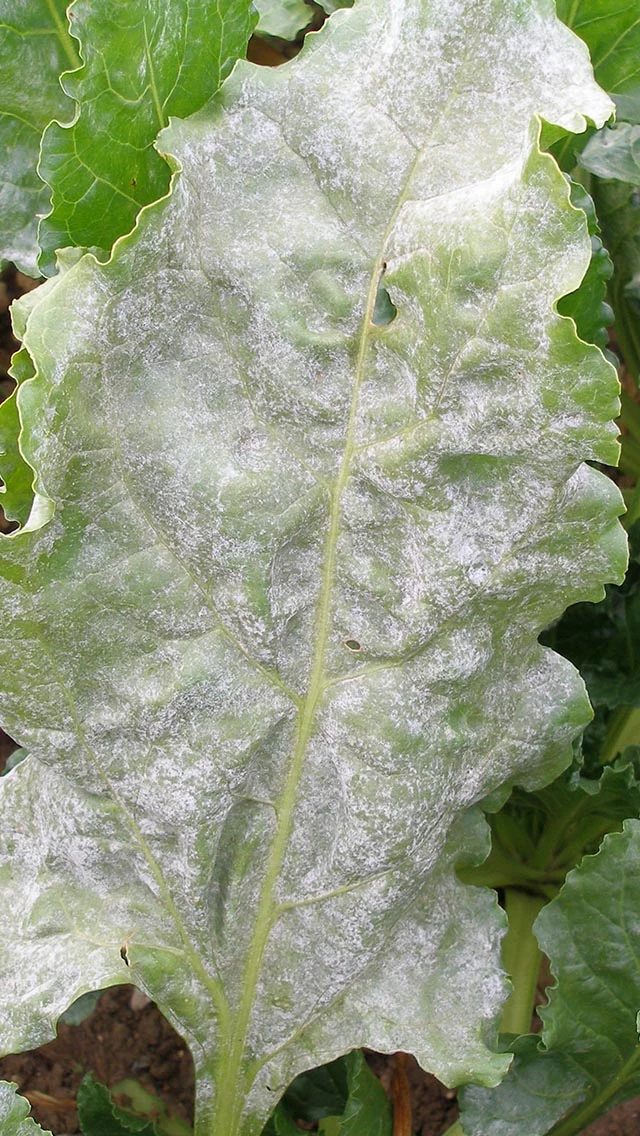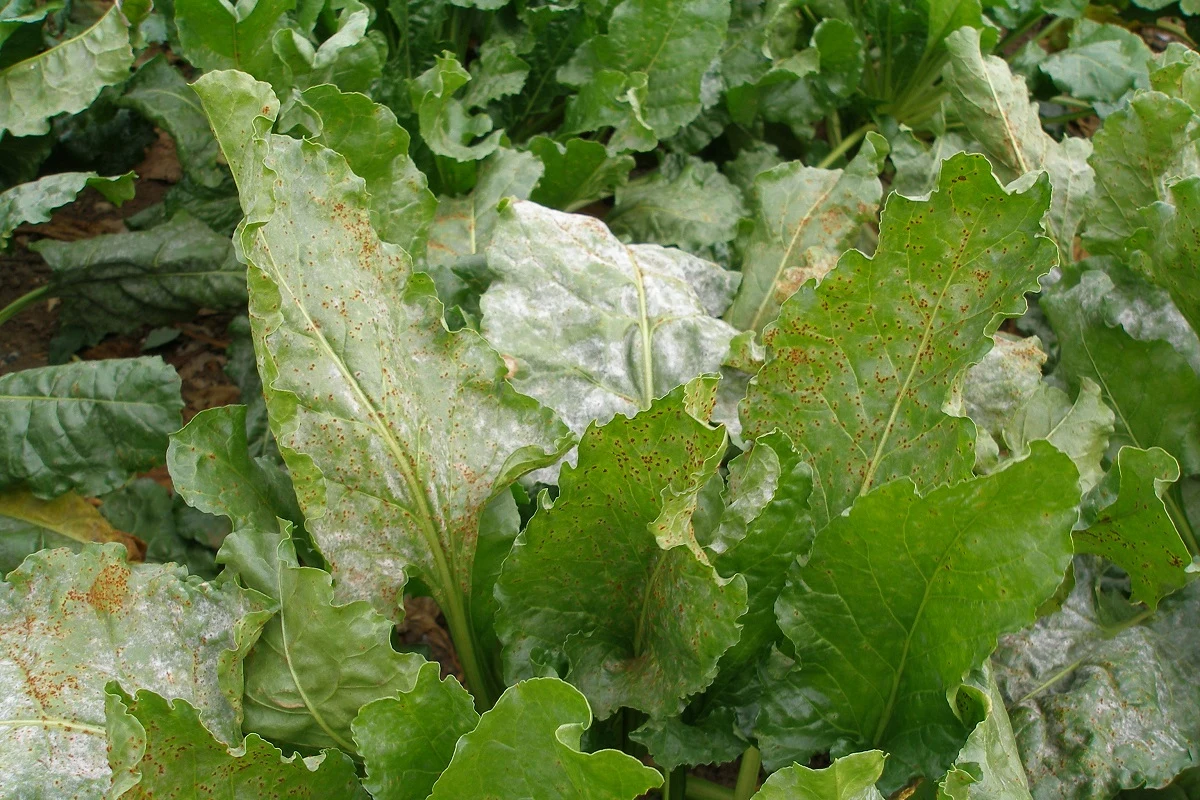
Powdery Mildew - Beet
Typical powdery mildew leaf symptoms
Pathogen
Fungus
Hosts
Sugar beet, beetroot.
Symptoms
A white/light grey mould of fungal mycelium and spores develops on the leaf surface, usually between August and October. Resting spores appear as small black dots on infected leaves. Leaves ultimately turn yellow and die. Conidiophores (specialised hyphae) release conidia (asexual spores) which further disperses the inoculum within the crop or to neighbouring fields, ascospores (sexual spores) are released later in the season when conditions are unsuitable for production of conidia.
Overwinters as mycelia on wild beet, groundkeepers or beet volunteers.
Development
The disease initially occurs on isolated plants, but can quickly spread throughout the whole field. The mould reduces leaf photosynthesis and accelerates leaf senescence, which subsequently reduces root yields.
Favourable Factors
Suitable conditions for disease establishment are dry weather and high temperatures (20 °C optimum) with dew at night.
The annual forecast of the likely disease pressure for the newly sown crop is based on the number of frosts in February and March. Cold winters with frequent frosts are unfavourable for disease development.
Importance
Substantial yield losses. Sugar yield may be reduced by up to 30 %.
Control
Avoid more susceptible varieties as documented on the Recommended List
Apply foliar fungicides when the disease first starts to become active in late July / August.

Typical powdery mildew leaf symptoms


